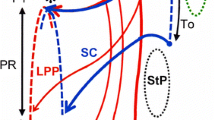Abstract
To clarify the morphologic characteristics of the superior pharyngeal constrictor muscle, which plays an important role in swallowing, the gross anatomy of the pterygopharyngeal, buccopharyngeal, mylopharyngeal, and glossopharyngeal parts of the muscle was examined. Morphology of the origin of the muscle at the buccopharyngeal part could be divided into three types: type A, membranous morphology from superior to inferior areas; type B, membranous only in superior area; and type C, complete lack of membrane. In all three types, the muscle at the buccopharyngeal part transitionally originated from the buccinator muscle. Morphology of the origin of the muscle at the mylopharyngeal part could be divided into two types: type A, tip of the origin on the mylohyoid line; and type B, tip of the origin away from the mylohyoid line. The present study found that the superior pharyngeal constrictor muscle is attached to the buccinator muscle (which plays an important role in mastication) with mucosa and originates from the mandible and root of the tongue. These findings suggest that the superior pharyngeal constrictor muscle may also play an important role in the expression of smooth coordinated movements associated with ingestion, from mastication to swallowing.
















Similar content being viewed by others
References
Donner MW, Bosma JF, Robertson D: Anatomy, physiology of the pharynx. Gastrosintest Radiol 10:196–212, 1985
Bosma JF, Donner MW, Tanaka E, Robertson D: Anatomy of the pharynx, pertinent to swallowing. Dysphagia 1:23–33, 1986
Snell RS: Atlas of Clinical Anatomy. Boston: Little, Brown, 1978, pp 476–477
Williams PL: Gray’s Anatomy, 38th ed. Philadelphia: W. B. Saunders, 1995, pp 1726–1733
Agur AMR, Lee MJ: Grant’s Atlas of anatomy, 10th ed. Philadelphia: Lippincott Williams & Wilkins, 1999, pp 676–684
Brand RW, Isselhard DE: Anatomy of Orofacial Structures. Saint Louis: Mosby, 2003, pp 356–363
Putz R, Pabst R: Sobotta atlas of human anatomy, Vol.1, 13th English ed. Philadelphia: Lippincott Williams & Wilkins, 2001, pp 136–138
Hollinshead WH: Anatomy of the pharynx and esophagus. In: English GM (ed.) Otolaryngology Philadelphia: Harper and Row, 1985, pp 1–9
Bosma JF, Bartner H: Ligaments of the larynx and the adjacent pharynx and esophagus. Dysphagia 8:23–28, 1993
Mu L, Sanders I: Muscle fiber-type distribution pattern in the human cricopharyngeus muscle. Dysphagia 17:87–96, 2002
Leaper M, Zhang M: An anatomical protrusion exists on the posterior hypopharyngeal wall in some elderly cadavers. Dysphagia 20:8–14, 2005
Casey DM: Palatopharyngeal anatomy and physiology. J Prosthet Dent 49: 371-378, 1983
Howland JP, Brodie AG: Pressures exerted by the buccinator muscle. Angle Orthod 36:1–12, 1966
Sicher H: The anatomy of mandibular anesthesia. J Am Dent Assoc 33:1541–1557, 1946
Gaughran GRL: The pterygomandibular raphe-anatomical artifact. Anat Rec 184:410, 1976
Saigusa H, Yamashita K, Tanuma K, Saigusa M, Niimi S: Morphological studies for retrusive movement of the human adult tongue. Clin Anat 17:93–98, 2004
Shimada K, Gasser RF: Morphology of the pterygomandibular raphe in human fetuses and adults. Anat Rec 224:117–122, 1989
Shimada K, Gasser RF: Variations of the pharyngeal raphe. Clin Anat 1:285–294, 1988
Author information
Authors and Affiliations
Corresponding author
Rights and permissions
About this article
Cite this article
Tsumori, N., Abe, S., Agematsu, H. et al. Morphologic Characteristics of the Superior Pharyngeal Constrictor Muscle in Relation to the Function During Swallowing. Dysphagia 22, 122–129 (2007). https://doi.org/10.1007/s00455-006-9063-2
Received:
Accepted:
Published:
Issue Date:
DOI: https://doi.org/10.1007/s00455-006-9063-2




